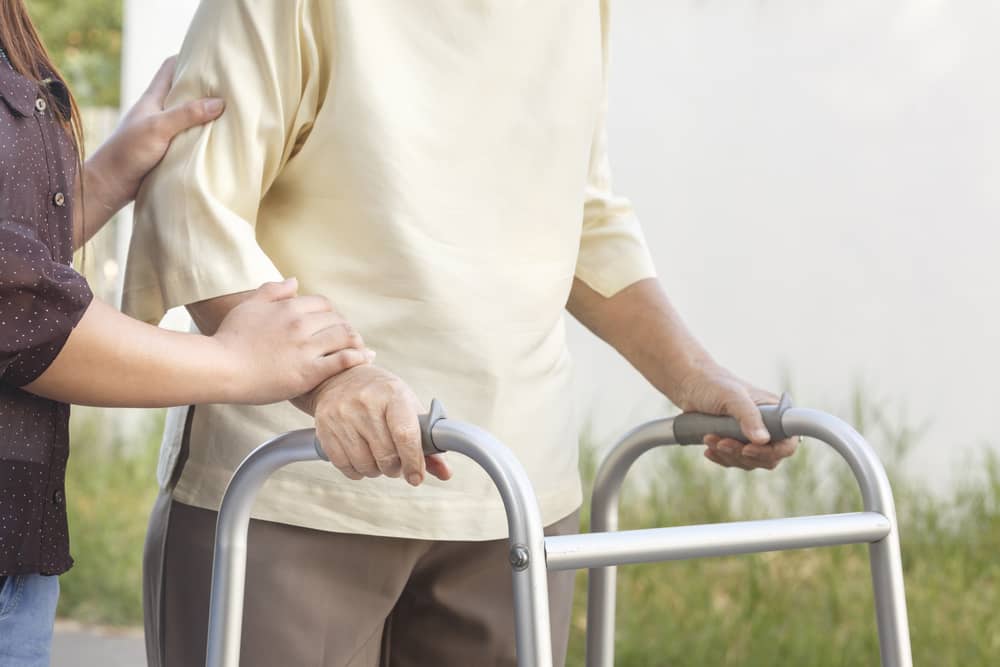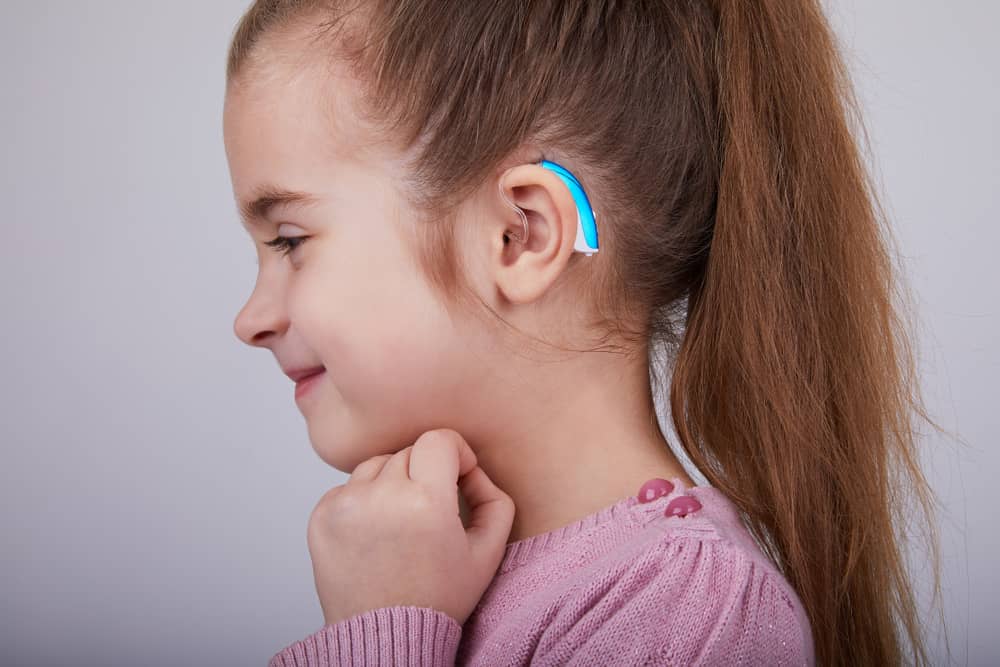According to the World Health Organization, over one billion people need an assistive device to help them with activities of daily living. Additionally, more than two billion people will need at least one adaptive product by 2030. With this in mind, we’ve created a blog covering assistive devices for people with disabilities, the wide variety of products available, how to pay for these items, and more.
Table of Contents
What Are Assistive Devices?
Assistive technology items are designed to help people with disabilities perform activities of daily life and fully participate in their communities. These items can be purchased, modified, or customized, and are specifically designed to help you independently complete tasks you may not be able to otherwise.
Access to high-quality assistive technology items is key to the personal and professional development of individuals with disabilities. These products also help remove physical or mental barriers that may keep you from achieving your full potential. The right assistive devices can also help you stay in your own home for as long as possible, rather than moving into a long-term care facility.
What is Adaptive Equipment?
Adaptive equipment is a subcategory of assistive technology that’s specifically designed for people with disabilities (and unlikely to be used by those without them). In most cases, adaptive devices for persons with disabilities are modified to help you complete a specific task. Common examples include adaptive car equipment, screen readers, and sip-and-puff systems, among others.
Who Can Benefit from Assistive Devices & Adaptive Equipment?
Many people can benefit from incorporating adaptive equipment and assistive devices into their everyday lives. This includes:
- People with disabilities
- Seniors
- People with gradual functional decline/debilitative illnesses
- People with noncommunicable diseases (e.g. diabetes and stroke)
- People with mental health conditions (including dementia and autism)

List of Assistive Devices & Adaptive Equipment
There are many examples of adaptive devices and assistive technology items for people with disabilities. We’ve broken them down into categories and will take a closer look at each one below.
Cognitive Devices
These items are specifically designed to help people with brain injuries, dementia, mental illness, and intellectual disabilities. Adaptive cognitive devices include diaries, calendars, lists, schedules, and personal organizers. There are also a variety of assistive devices intended specifically for people with dementia, like:
- “Talking” wristwatches
- Voice-activated phone dialers
- Automated pill dispensers
- Beeping devices on small items
- Warning signs on dangerous appliances
- Mobility monitors/tracking systems
- Medical ID bracelets
Communication Devices
These assistive technology items are intended to help people who have difficulty producing or understanding speech. Depending on their functionalities, these devices may be referred to as augmentative (supporting speech) or alternative (compensating for speech). Examples include:
- Communication boards (with pictures, symbols, and/or letters)
- Request cards
- Electronic speech output devices
- Eye gaze and head trackers
- Picture-based instructions
- Augmentative & assistive communication systems (AACs)
Daily Living Devices
The largest category of assistive devices for people with disabilities, these items allow you to safely live at home for as long as possible. They’re specifically designed to help you complete activities of daily living (ADLs) and instrumental activities of daily living (IADLs). Here are a handful of the most common assistive and adaptive daily living devices:
- Clothing: Dressing sticks, long-handled shoe horns, button hooks, sock aids, elastic shoelaces
- Bathing: Tub/shower chairs, handheld shower heads, grab bars, commodes, toilet risers, tub mats
- Hygiene: Protective undergarments, mattress/floor protectors, catheters
- Mobility: Transfer boards, mechanical lifts, bed bars, hip pads
- Eating & Food Preparation: Adaptive utensils, non-skid bowls, plate guards, scoop dishes, long straws, smart appliances
- Organization: Reach extenders, specialized handles and grips, self-opening scissors, bedside organizers
- Reading & Learning: Automatic page turners, book holders, adapted pen/pencil grips
- Medication: Medication organizers, dosage timers, pill crushers/splitters
- Safety: Personal emergency response systems (pendant, bracelet, or belt)
Hearing Devices
Along with making it easier to hear, these assistive devices can improve your language skills, thereby increasing your access to education and employment. Assistive technology items for hearing include:
- Hearing aids and loops
- Cochlear implants
- Coupling accessories
- Frequency modulation (FM) systems
- Headphones for listening to audiovisual content
- Closed captioning
- Visual alert systems
- Real-time transcription
- Teletype phones (TTYs)
- Telecommunications devices for the deaf (TDDs)

Mobility Devices
This category of assistive devices for people with disabilities includes a wide variety of items that make it easier to navigate your physical environment. Along with reducing healthcare costs, these products can improve your access to educational and professional opportunities. You can also find ultra-lightweight mobility devices that allow you to play sports and remain physically active.
Here is a list of assistive devices specifically designed to improve your mobility:
- Wheelchairs (manual or electric)
- Three-wheeled scooters
- Walkers/walking frames
- Canes/walking sticks
- Crutches
- Prosthetic and orthotic devices
- Orthopedic shoes
- Mounting systems
- Braces
- Gait belts
Positioning Devices
Positioning products and equipment are among the most common assistive technology devices for physical disabilities. People with physical disabilities may have difficulty maintaining good posture, leaving them more at risk of developing deformities and other health problems. Positioning devices include wedges, standing frames, cushions, splints, and corner chairs, among others.
Vision Devices
The final category of assistive devices for people with disabilities contains products designed for individuals who are visually impaired or blind. You can choose from the following list of adaptive devices:
- Large-print books
- Braille systems
- Audiobooks
- Screen readers
- Screen enlargement applications
- Voice recognition programs
- Traditional phones with large buttons or visual keyboard displays
- Smart devices with voice-to-text and voice-operated commands
Choosing the Right Adaptive Equipment & Assistive Devices
The wide variety of assistive and adaptive devices for persons with disabilities can make choosing the right product very overwhelming. It’s important to consult with your doctor and any other relevant professionals who can help you find the best device for your needs. Depending on your situation, this may include teachers, physical or occupational therapists, speech-language pathologists, and representatives from companies that manufacture assistive technologies.
Your best bet is to pick the simplest product that targets the specific activity that you need assistance with. Along with being easier to use, basic devices are typically less expensive and easier to maintain than complicated ones. Solicit recommendations from other people with disabilities, and request a free trial whenever possible to see if the assistive device will actually meet your needs.
Barriers to Obtaining Adaptive & Assistive Technology Items
Unfortunately, there are many barriers associated with obtaining adaptive and assistive devices for people with disabilities. These challenges include (but are not limited to) the following:
- Lack of awareness
- Inaccessible physical environments
- Lack of government legislation and policies
- Lack of programs and services
- Lack of state/federal funding
- Lack of products and trained personnel

Most countries don’t have national assistive technology policy programs, and private sector access is typically poor or nonexistent. Additionally, assistive devices often aren’t included in healthcare plans, leading to high out-of-pocket costs that are prohibitive for many people who need them.
Making adaptive equipment and assistive technology more accessible for people with disabilities – regardless of their location or income level – starts with:
- Clearly identifying businesses that build, repair, and maintain assistive technology
- Obtaining information on referrals, costs, and processes for each of those businesses
- Compiling potential funding opportunities for people who cannot afford assistive products
- Partnering with referral organizations to decentralize product and service provisions
- Providing transportation and home- or community-based repair services in remote areas
Paying for Adaptive Equipment & Assistive Technology
As mentioned above, assistive technology items often come with significant purchase and maintenance expenses. This is especially true for devices that are intended for children or individuals whose expected improvement will ultimately cause them to outgrow the product.
If you’re not sure how to fund assistive devices for people with disabilities, here are a few potential sources to get you started:
- School districts/systems
- Government programs (Social Security, Medicare, VA benefits, and Medicaid)
- Private health insurance
- Rehabilitation and job training programs
- Employers
- Private foundations, charities, and civic organizations
Do you need adaptive equipment and assistive devices for you or a loved one? We can help you obtain a variety of high-quality products that allow you to live more independently and comfortably. Plus, our team can walk you through how to receive financial assistance for assistive devices for people with disabilities. Visit our Resource Center or contact a Customer Care Representative to get started!